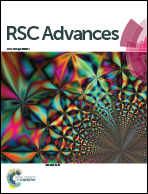Gold(i)-catalyzed intramolecular hydroarylation and the subsequent ring enlargement of methylenecyclopropanes to cyclobutenes†
Abstract
The gold(I)-catalyzed intramolecular hydroarylation of methylenecyclopropanes containing aryl propargyl ethers proceeded smoothly to give 2H-chromene derivatives in good to excellent yields under mild conditions. Furthermore, in the presence of IPrAuSbF6, these 2H-chromene derivatives containing a methylenecyclopropane could undergo ring enlargement to give the corresponding cyclobutenes.


 Please wait while we load your content...
Please wait while we load your content...